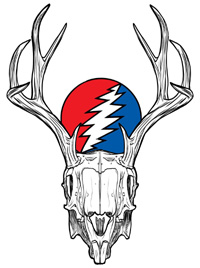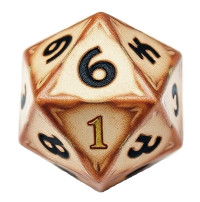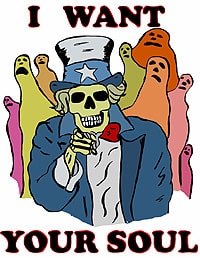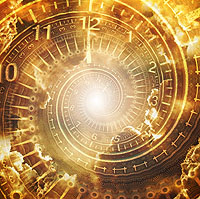Read by David Timpson
Chapter 1
“In the second century of the Christian era the Empire of Rome comprehended the fairest part of the earth...guarded by ancient renown and disciplined valor...their peaceful inhabitants enjoyed and abused the advantages of wealth and luxury...”
Gibbon eases into the twilight of the best run western civilization we know of, during The Peace of Rome, or the reign of The five good emperors: “Nerva, Trajan, Hadrian, Antonius Pious and Marcus Aurelius.”
He then immediately points out that it was these five men, who had finally, found five various methods of maintaining the “safety or dignity of Rome” according to “the precepts” of Augustus, the first emperor, who challenged his successors to abide by his conservative guidelines for maintaining this “fairest part of the world” his “advice for confining the empire into those [natural] limits,” These were adopted by the “fears and vices of his immediate successors,” Tiberius, Caligula, Claudius, Nero and the Flavians.
The worthless hazard that was Northern Europe both loomed and invited, peopled by “a hardy race of barbarians who despised life when it was separated from freedom.”
In this view, America seems to type as a Rome without an Augustus. It is noted that all defensible conquests were achieved by the Republic, and that the later Imperial Roman conquests were peripheral, hard won and of lesser value.
His summary of the conquest of Britain is a wonderful piece of writing, “Undertaken by the most stupid, maintained by the most dissolute and terminated by the most timid of Roman emperors...”
It is obvious that Gibbon sees British modern heritage as more Roman than Breton and this reader does not disagree. As much as Revolutionary France and Fascist Germany imitated ancient Roman military aesthetics, it was Great Britain that pursued a Roman model of civic colonization, and the Americans after them.
The redolent mental map presented in Gibbon's prose, the cultural texture and personality types revealed in his diction, are woven together in such passage as:
“Gloomy hills assailed by the winter tempest...over which the deer in the forests were chased by a troop of naked barbarians.”
The memorable summation of the Dacian War by Trajan—an actual genocide—was in fact a war of civilized mechanics against human metaphysics, in which the transmigration of the soul—echoing Hindu and Christian sentiments—believed in by the soulful Dacians was given wings by the soulless Romans who sent the freedom fighters off to Nirvana in five years of slaughter.
Gibbon explains beautifully how difficult it was for an imperator to forget the precepts of Augustus for the example of Alexander:
“As long as mankind shall continue to bestow more liberal applause on their destroyers then on their benefactors the thirst of military glory will ever by the thirst of its most exulted characters.”
Terminus was the minor god of boundaries who did not submit to Jove but did to Trajan. Hadrian declining to defend Trajan's conquests, Antonius Pious declining to travel the empire, and Marcus Aurelius finally facing the population pressure from those nations of free people, offers a shadow dance in which the man most able to judge the pressures facing his empire always chose a man of high ability with different qualities than himself: Soldier, Engineer, Priest, Warrior-Philosopher suited to the changing climes. “Despite these differences in personal conduct” they kept with the precepts of Augustus and maintained a nation most stable. Just as America and Europe are prosperous and war-free regions that beckon the subjects of chaotic countries to come hither, it seems that Rome during its long peace, became a migration destination for those fleeing turmoil.
A historian unafraid to describe a people as “degenerate” or a man as of “mean” or “exulted” character is a refreshment to the ears of this creature of the age of gray compromise and insipid negation.
Like the modern American war machine that rules most of the world through 900-plus military bases, the men who manned the Legions of Rome, were drawn from racially Nordic types of people and from rural working class families. That military tradition is the clearest aspect in which the postmodern American soldier and the legionaire of Late Antiquity are near mirror images. Both nations were and are “a constitutional republic” which at a certain point fell to rule through military power brokers.
That point came in about A.D. 50 with the elevation of Claudius by the Preatorian Guard, and the use of the U.S. Military to ensure the enthronement of an un-elected president in 2021. Since Rome did not “go to hell in a hand basket” until about 130 years later, with the passing of Marcus Aurelius, one might breathe the easier on the eve of 2022. However, technological change and social dislocation are currently greatly accelerated over those times.
Gibbon's telling of the composition of a Roman legion is perfectly accurate and dramatically stated in the appropriate places. The Roman cavalry trooper of the 100s A.D. seems to have been the prototype of the Medieval Knight. Various barbarians were used “to compel their dangerous valor” in service to Rome, which reminds one of the giving of citizenship to such martial folk as Filipino, Somoan and Peurto Rican under American arms. Of interest is that Gibbon points out in a footnote, that as men of “personal valor” and “military skill” became less numerous, “when men were no longer found their place was supplied by machines.” The analysis shows that ancient Roman camps were more efficient than early modern British, that the mechanical artillery was comparable to the gunpowder canon of circa 1800.
Mind you this was written at the very dawn of the Industrial Age, and that the weight born by the ancient soldier, “would oppress the delicacy of the modern soldier” demonstrates Gibbon's knowledge here and elsewhere that the soldier of his age was a malnourished and conscripted fellow as likely to be an urban boy as a rural one. Of course, the Brits, like the Romans, accepted barbarian [Scottish highland] volunteers for service.
Gibbon sneers at the Roman fear of the open Ocean. The size of the legion is accurately described as equal to a modern brigade, and not a division. Of great interest is the fact that less then 500,000 men manned all of the naval and army forces of the emperors, a total that would be exceeded by mere petty princes such as the Prussian Elector of Gibbon's age. This military occupation level is extremely low and must not be taken as reflective of a low population density, as intensive agriculture without any machine amplification of work was underway. As Gibbon would later note, a scheme, to dress the slaves in Rome alike was abandoned, as a realization that the slaves would discover their massed numerical advantage!
In this light, this reader would suggest, that Rome was excellent at destroying warrior societies, taking the warrior elements into the system of control, and forming a predatory matrix that had no internal enemy, only a dispersed and less well-equipped and supplied collection of atomized and external warrior societies, awaited employment as mercenaries, or allies, and incorporation as auxiliaries and eventually legionnaires themselves.
A nice prose evolution of early Roman, to Imperial Roman, to early modern political divisions are traced, noting that all of the then powerful Austrio-Hungarian Empire and much of the Ottoman-Turkish Empires were once within Roman boundaries.
“The present state of those countries” are noted, such as one area being “united in Turkish slavery!”
Apparently a Phil-Hellene, Gibbon cannot help but gasp at the fact that such storied nations as Argos, Athens and Sparta and others would all be encompassed within a single Roman province. This titanic verbal tour of geography delves back onto early Roman and Greek history and up to Gibbon's time. Noting that Asian revolutions have always been “humbly obeyed” by Egypt, Gibbon questions the convention of strictly defined geographical continents. Gibbon's declination to “condescend to style” the piratical heads of North African state in his time as actual monarchs is dearly combined with a dismissal of Voltair'e geography.
“It is easier to deplore the fate than describe the actual condition of Corsica” is a hilarious piece of contemporary commentary, and is edified by his extolling of “the little rock of Malta” defying the Turks while Europe looked away as the culmination of his geographic circuit of the ancient Roman empire from Iberia and Italy up and around Europe, down through the Near East and across “savage” Africa and back again.
Reading Gibbon's description of the ancient space, updated for his time, is like reading a recitation of aborigine American cultures and what has befallen their homelands, such as Detroit becoming a post-industrial crime zone and the mountain lake of Mexico becoming a 20-million beaner ghetto.











The US are less like Rome and more like Carthage pretending to be Rome. The child sacrifice and money worship gives it away.